.
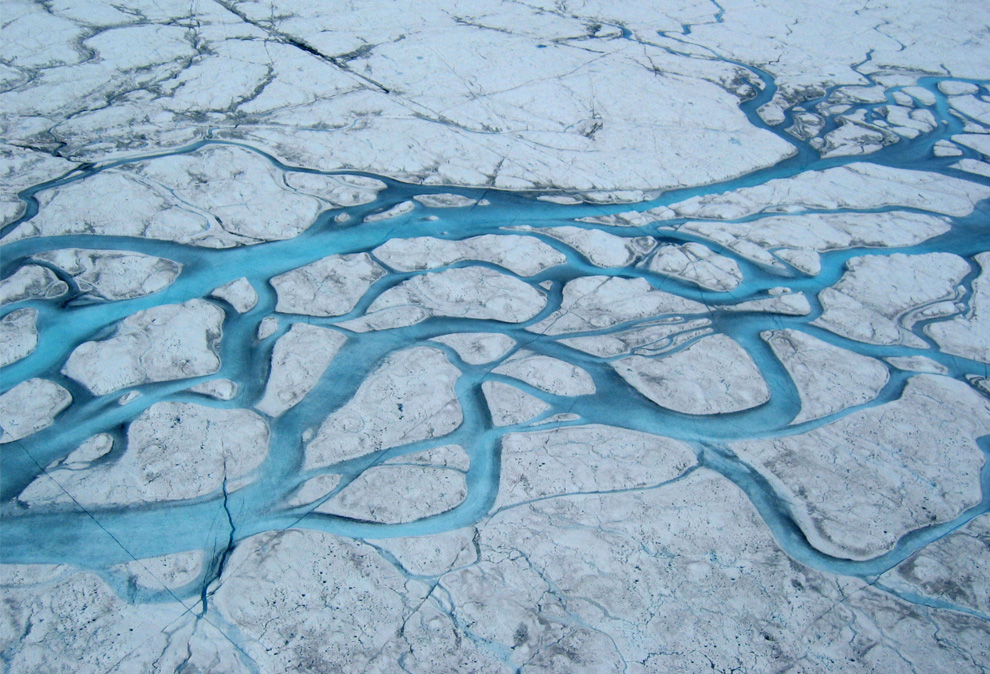
Large moulin on the surface of the Greenland ice sheet. Two recent studies of ice sheet motion and melting suggest that surface melting can produce dramatic drainage and seismic shifting on the Greenland Ice Sheet. But, surface melt that eventually lubricates the bottom of the ice sheet and accelerates its slide over bedrock may not be enough, by itself, to cause catastrophic loss of ice sheet mass: photo via Science Express, 17 April 2008
The ice sheets of Greenland and
Antarctica are losing ice at accelerating rates, much of which is a
response to oceanic forcing,
especially of the floating ice shelves. Recent
observations establish a clear correspondence between the increased
delivery
of oceanic heat to the ice-sheet margin and
increased ice loss. In Antarctica, most of these processes are
reasonably well
understood but have not been rigorously
quantified. In Greenland, an understanding of the processes by which
warmer ocean
temperatures drive the observed retreat remains
elusive. Experiments designed to identify the relevant processes are
confounded
by the logistical difficulties of instrumenting
ice-choked fjords with actively calving glaciers. For both ice sheets,
multiple
challenges remain before the fully coupled
ice-ocean-atmosphere models needed for rigorous sea-level projection are
available.
Abstract of a paper: Ice-Sheet Response to Oceanic Forcing,
by Ian Joghlin, Polar Science Center, Applied Physics Laboratory,
University of Washington; Richard B. Alley, Department of Geosciences,
Pennsylvania State University; and David M. Holland, Center
for Atmosphere Ocean Science, Department of Mathematics and Courant
Institute of Mathematical Sciences, New York University; in Science, 30 November 2012
Each summer, streams channel much of the melt that is produced by the warmer temperatures along lower levels of the Greenland ice sheet: photo by Ian Joughin/AAAS, via The Guardian, 29 November 2012
Surface melt water rushes along the Greenland ice sheet through a glacial stream channel: photo by Ian Joughin/AAAS, via The Guardian, 29 November 2012
Over the course of several years, turbulent water overflow from a large melt lake carved this 60-foot deep canyon: photo by Ian Joughin/AAAS, via The Guardian, 29 November 2012
For several summers this deeply incised
melt channel transported overflow from a large melt lake to a moulin (a
conduit that drains the water through many hundreds of feet to the ice
sheet's bed): photo by Ian Joughin/AAAS, via The Guardian, 29 November 2012
A large melt lake, around 0.75 miles in diameter, that is just one of the many supraglacial lakes (liquid water on the top of a glacier) that form on the ice sheet's surface during the period of strong summer melt: photo by Ian Joughin/AAAS, via The Guardian, 29 November 2012
Moulins like this one drain surface meltwater through ice more than 3,000 feet thick to reach the base of the ice sheet, where a subglacial drainage network carries it to the ocean: photo by Ian Joughin/AAAS, via The Guardian, 29 November 2012
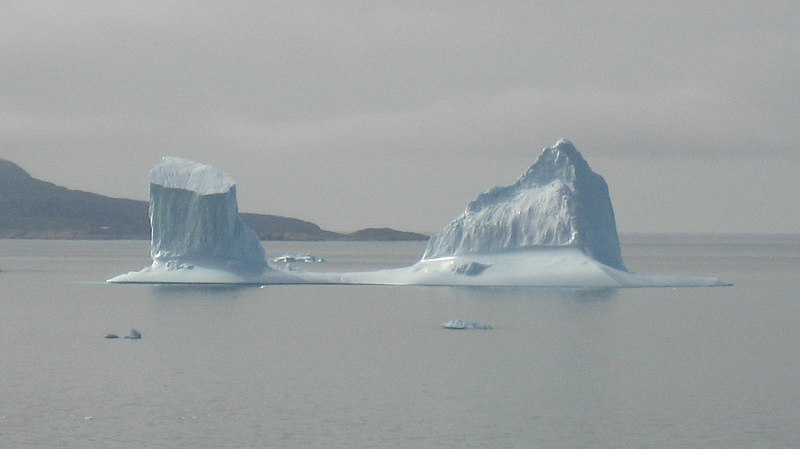
Deteriorating and drifting iceberg at harbour entrance near Sanderson Hope, south of Upernavik, Greenland. After successive calvings over a period of weeks, the slender arc connecting the main sections of the deteriorating ice mass has broken apparently releasing sufficient weight for the iceberg to start drifting towards Upernavik: photo by Kim Hansen, 31 July 2007
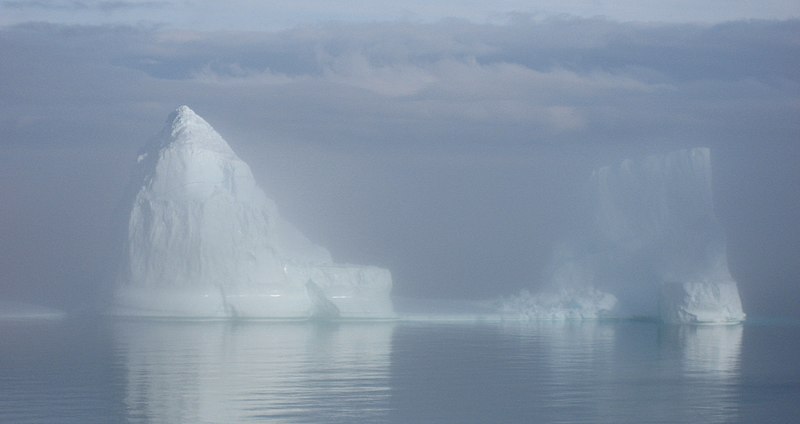
Deteriorating iceberg appears in morning fog stranded in shallow water at harbour entrance near Sanderson Hope, south of Upernavik, Greenland: photo by Kim Hansen, 1 August 2007
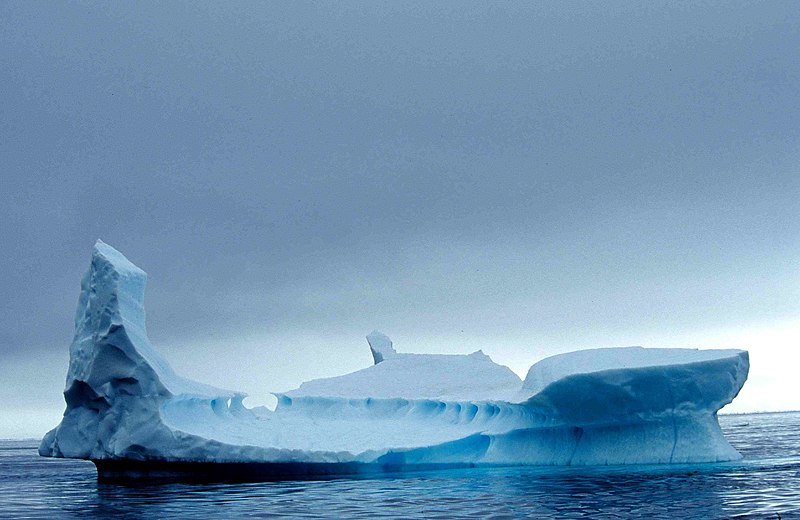
Iceberg remnant near north-eastern coast of Baffin Island: photo by Ansgar Walk, 23 July 2001; image 5 May 2006
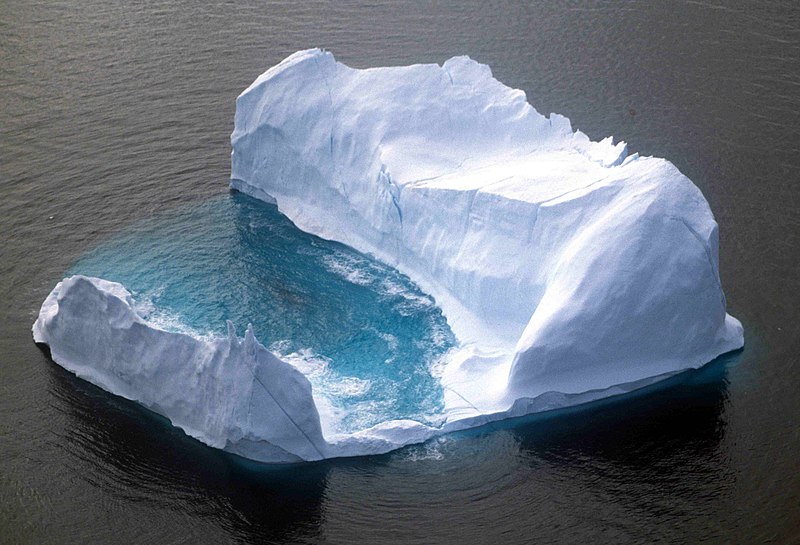
Calving iceberg near north-eastern coast of Baffin Island: photo by Ansgar Walk, 7 August 1997; image 5 May 2006
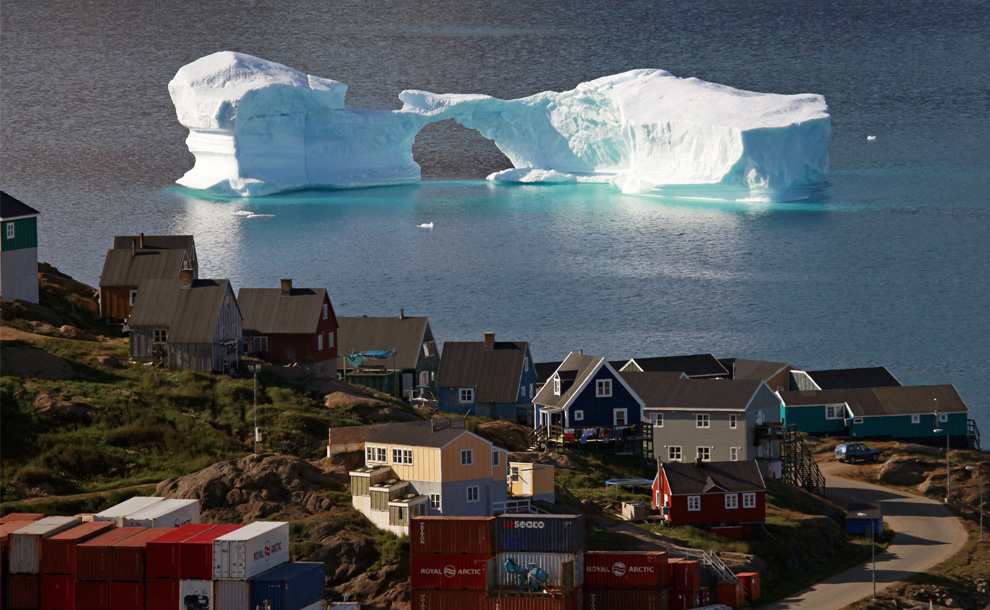
A calving iceberg floats near a harbour in the town of Kulusuk, east Greenland: photo by Bob Strong/Reuters, 1 August 2001

Icebergs float in a fjord near the south Greenland town of Narsaq: photo by Bob Strong/Reuters, 28 July 2009

Icebergs float in the calm waters of a fjord, south of Tasiilaq in eastern Greenland: photo by Bob Strong/Reuters, 4 August 2009

A polar bear walks along the edge of an ice bridge in the Robeson channel, between Greenland and Canada. Greenpeace and leading climate scientists are in Greenland for a three month expedition using their icebreaking ship the Arctic Sunrise to gather climate change data for the Copenhagen climate summit in December 2009: photo by Nick Cobbing/Reuters/Greenpeace, 29 June 2009
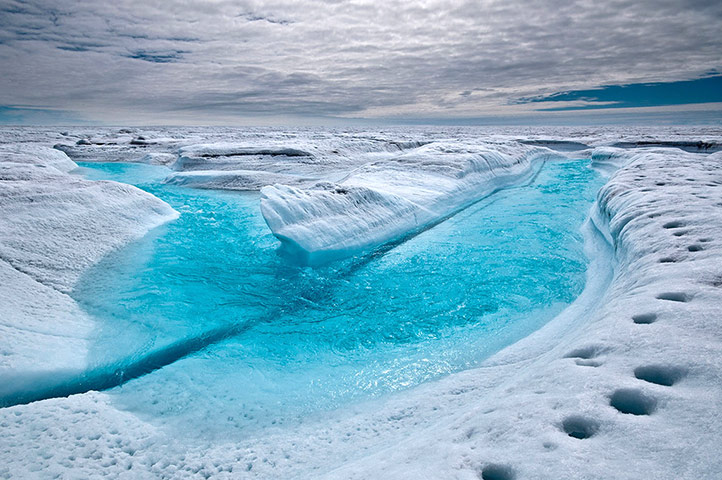
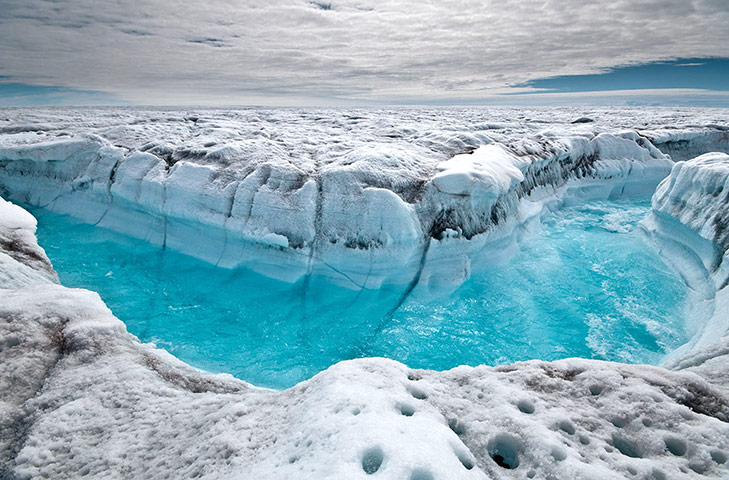
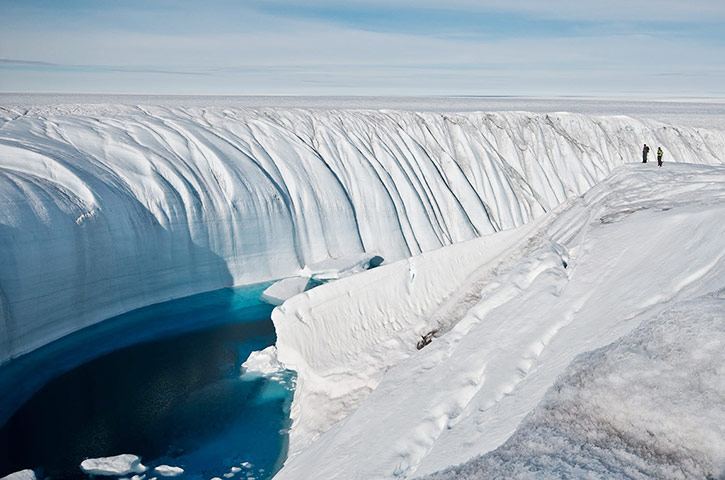
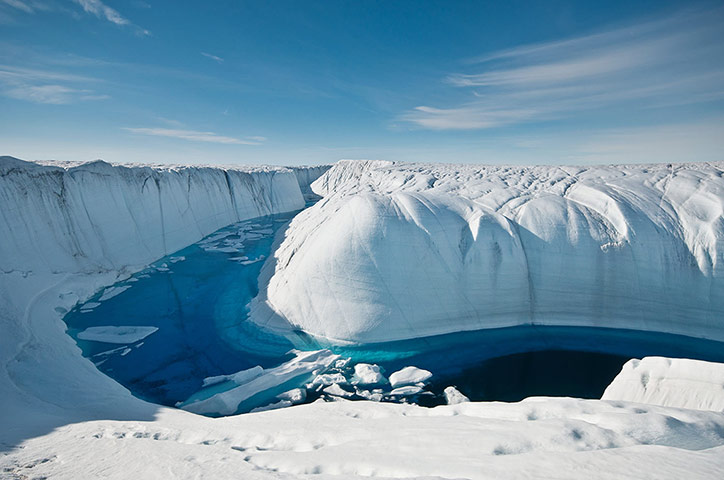
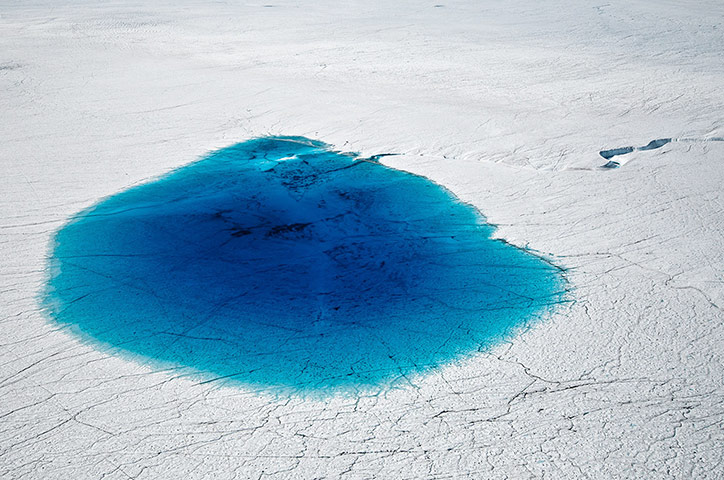
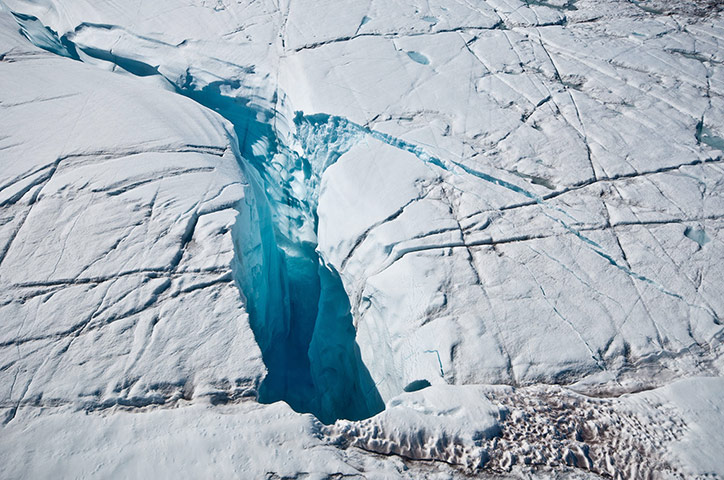



7 comments:
These images are beautiful. And what's happening is too terrible for words.
So beautiful to look at though, isn't it?
What about that sub-Antarctic lake they'r drilling into. Been submerged beneath the ice for millions of years.
Leave well alone, I say. Down there, there be monsters.
It’s always been a mystery to me how something so beautiful could have so much death in it, and how that terrible beauty signals the end of something.
yes...so beautiful images...thanks!
Funny -- I was writing something called The Vanishing, but on another subject. Anyway, it won't come out as well or as beautifully presented as this, and it definitely won't distinguish itself on account of greater cheerfulness. This is very fine. Curtis
Tom,
Such amazing pictures, documenting such alarming 'news'
12.15
light coming into sky above black plane
of ridge, jet passing above pine branch
in foreground, wave sounding in channel
from the standpoint of for,
closed space and such
motion of material, becomes
system, gravitational
grey white clouds reflected in channel,
shadowed green pine on tip of sandspit
Well, I suppose there was never any promise that the end of life on the planet would not be beautiful.
Perhaps it's merely a matter of somehow attaining to the long view. Cosmic perspective and all that. Still where is the high ground, which of us are the Olympians, or is it always the ParaOlympics now, the lack of proper quantification being not only our salient disability but our last defence against knowledge of the inevitable?
BTW Curtis, about the title -- think I know what you mean, as ever.
We're all always inside this box. It's suffocating. We can't get out. Is it just a dream?
Spoorloos (The Vanishing), 1988
Post a Comment